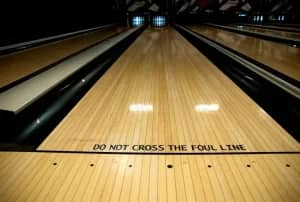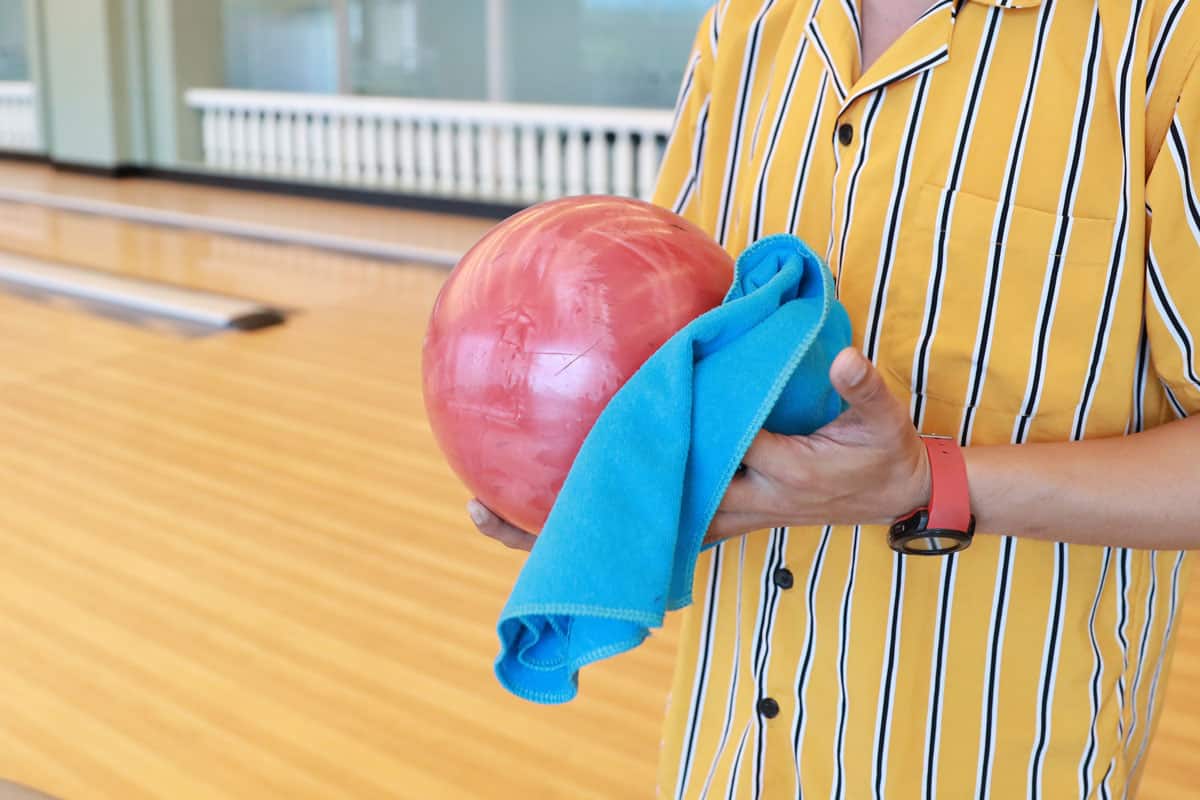Have you ever struggled to maintain control over your bowling ball on oily lanes, your scores plummeting as your frustration rises? If so, you’re not alone. Many bowlers face this common challenge, but luckily there is a solution – a bowling ball designed specifically for oily lanes.

Contents
Why They Oil The Bowling Lane
Oils are applied to bowling lanes as part of regular maintenance, and they serve several purposes. They help protect the lane surface from wear and tear, create a smoother and more consistent surface for bowling balls to roll on, and even out any imperfections in the lane.
How To Know If Your Lane Is Oily
An oily lane’s presence isn’t always apparent to the naked eye, but its effects on the ball’s trajectory can’t be missed. One of the key signs that you’re on an oily lane is if your bowling ball tends to slide more and hooks less, struggling to grip the surface as it glides down the lane.

Tips to Master the Oily Lane
- Choose the Right Bowling Ball: For Oily lanes, bowling balls have a solid coverstock and aggressive surface texture for better grip on the slippery surface, ensuring a predictable path to the pins.
- Adjust Your Throwing Technique: Adapt your releases and hook on oily lanes. Roll the ball more and spin it less for better control. Aim for the oilier part of the lane where the ball can glide smoothly without deviating from its path.
- Practice Lane Reading: Learn to read the oil patterns by observing how your ball reacts upon impact. This will help you find the line that maximizes pin action, leading to better scores even in oily conditions.
How to Choose the Right Ball for Oily Lane
The ball’s coverstock – the outer layer that contacts the lane. For oily conditions, solid reactive resin coverstocks are the best choice, offering traction on the slippery surface for consistent hooking.
The surface finish: Rougher, textured finishes provide more friction with the lane, improving grip and resisting sliding on oily lanes.
Weight, size, and oil pattern on the lane: Bowling balls for oily lanes are typically heavier and larger, providing control and stability. Understanding the oil pattern helps choose a ball with the right hook potential.

Do Plastic Balls Perform Well On Oily Lanes?
Plastic bowling balls have a smooth surface and are less absorbent, making them ideal for dry conditions where you don’t want excessive hooks. However, in oily conditions, they tend to skid more and have less traction, making it challenging to aim and control accurately.
Are Reactive Resin Bowling Balls the Best for Oily Lanes?
Reactive resin balls are indeed the best choice for oily lanes.
These balls have a porous and tacky surface that creates high friction with the lane, allowing them to grip the lane effectively. Reactive resin balls can “react” to the oil on the lanes, cutting through it to connect with the lane surface and maintain a stable and predictable path.
Do I Need to Clean My Ball After Playing on an Oily Lane?
Certainly, cleaning your bowling ball after playing on an oily lane is essential. The oil from the lane can accumulate on the ball’s surface, reducing its traction and affecting its performance over time.

How Do Dry Lane and Wet Lane Affect Your Game?
Dry and wet lanes can greatly affect your bowling game, influencing the movement of the bowling ball and the overall outcome.
Dry Lanes: Less oil on dry lanes means more friction. This results in faster and more aggressive hooking of your bowling ball, potentially leading to more strikes but also making it harder to control its path.
Wet Lanes: wet or oily lanes provide a slippery surface with reduced friction, causing the ball to slide more and hook. For such lanes, a ball with a solid reactive resin coverstock and rough surface finish offers better grip and control.
Which Lane Do Pro Players Often Play At
Professional players typically play on a variety of lane conditions, from dry to oily, to test their skills and adaptability. However, major tournaments often feature medium to heavily oiled lanes. This is because oil patterns on such lanes can be quite complex and challenging, requiring players to adjust their tactics and strategies consistently.
Should I Play on an Oily Lane as a Beginner?
Beginners may find starting with oily lanes challenging, but it’s a valuable learning experience. Oily lanes require adjusting your technique and choosing the right bowling ball. It may seem daunting, but it’s a great way to quickly understand the game’s intricacies and develop versatility in your bowling skills.

Closing Thoughts
Bowling on an oily lane presents can seem daunting, but understanding the lane conditions and adjusting your strategies accordingly can turn these difficulties into opportunities for growth. Choosing the appropriate ball, developing a versatile technique, and learning to read the oil patterns are crucial skills that can help improve your overall performance. So, don’t shy away from oily lanes; rather, embrace them.

Allow me to introduce myself – I’m Eric Wilkinson, a true bowling aficionado. The world of bowling culture has always fascinated me, and I’ve made the exciting decision to share my passion through writing. As I embark on this blogging adventure, my goal is to provide fellow enthusiasts with valuable insights, tips, and captivating stories. Through my blog, I hope to ignite a deeper appreciation for the sport and foster a sense of community among fellow bowlers. Join me on this thrilling journey as we explore the vibrant world of bowling together.
